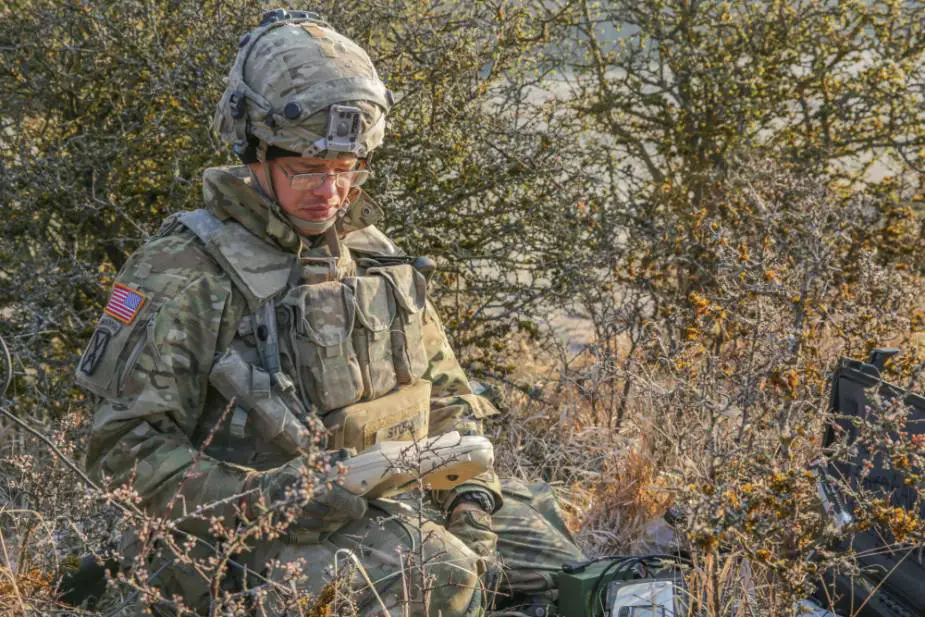U.S. company Draper is developing modeling and simulation (M&S) software that will enable scientists and engineers in the military to understand the effectiveness of resilient positioning, navigation and timing (PNT) technology on combat missions. Military researchers will use the software to model how potential PNT capabilities perform across air, sea and land.
Follow Army Recognition on Google News at this link

Using namely a GPS, a U.S. Army soldier assigned to the 2nd Cavalry Regiment prepares to control an AeroVironment RQ-11 Raven UAV at the Hohenfels Training Area, April 15, 2021. (Picture source: U.S. Army / Spc. Zachary Bouvier)
The initiative addresses the fact that the U.S. military has over the years structured its weapons systems and business processes around GPS PNT. This has created dependence and associated vulnerability—GPS may be targeted and may not always be available in contested military operating areas. One of the primary ways the DoD will deal with this is to access multiple diverse sources of PNT, according to a recent DoD strategy document.
“GPS is highly accurate, but your ability to get a GPS signal can be affected by many factors, including equipment malfunction or signal jamming. As the military continues to advance PNT sensor technologies to augment and complement GPS, Draper is providing modeling and simulation tools to support the research and development process,” Chance Reichel, defense systems program manager at Draper, said.
The new software, known as the Multi-Domain Quantitative Decision Aid (MQDA), will be used to analyze PNT components and systems in simulated environments and mission scenarios more quickly, easily and cost-effectively than can be done in the real world. For example, researchers can simulate the efficiency of different PNT sensors and measure the impact on a wide variety of combat scenarios.
Tools such as MQDA save time and money by providing early insight into the development process. Analyzing multiple combinations of PNT technologies enables the identification of the most effective ones, which then can be prioritized for development funding. This potentially enables the funding of more effective solutions.
Draper is supporting the development of the M&S tools using its expertise in digital engineering. The method enables the execution of the complete design and development process in a unified virtual environment. Digital engineering creates a reservoir of data during design and development, a “digital thread” of traceability, that can be used to detect problems before building expensive prototypes.
In designing MQDA, Draper leverages not only its experience with digital engineering but also its expertise in PNT design, development and testing. Draper PNT systems and instruments are designed in a digital engineering M&S systems-engineering setting, which supports low-cost prototyping and reliability in harsh environments. The company provides PNT solutions in precision-guided munitions, vision-based navigation, celestial tracking, high-precision clocks, advanced inertial measurement instruments and integration of GPS with inertial sensors.
Army Futures Command is leading the five-year joint-service software development program, which started in 2017. The AFC’s C5ISR Center is planning the scope and objectives for a final capstone demonstration in September 2021. The software’s end users will be research and development laboratories and experimentation and analysis organizations within the Army, Navy and Air Force.














